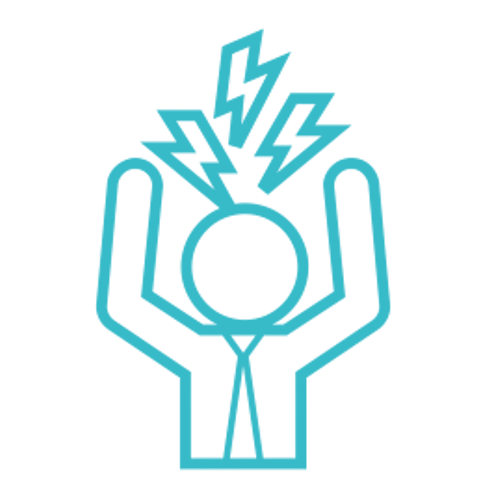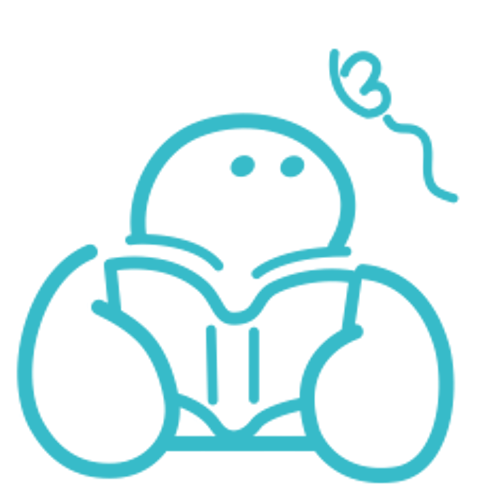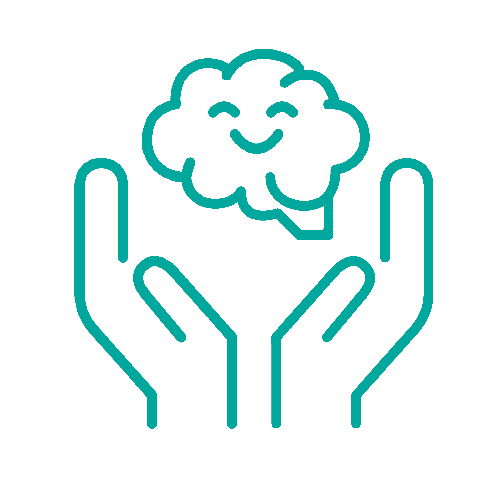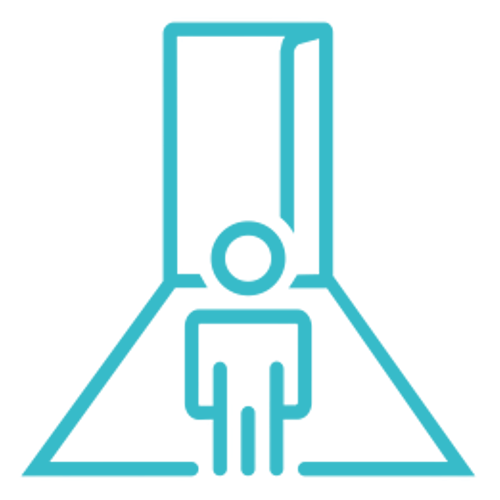Living in New York City can be both exhilarating and exhausting. The fast-paced lifestyle, endless traffic, and crowded streets can leave anyone feeling overwhelmed and stressed. In such a demanding environment, learning distress tolerance skills through Dialectical Behavior Therapy (DBT) can be a game-changer. Let’s delve into the distress tolerance techniques and skills, benefits of these skills for New Yorkers, helping them not just survive but thrive in the city that never sleeps.
What are distress tolerance skills in DBT?
Distress Tolerance Skills in Dialectical Behavior Therapy (DBT) are a set of techniques and strategies designed to help individuals cope with and manage intense emotions, crises, and distressing situations in a healthy and effective way. DBT, developed by Dr. Marsha M. Linehan, is a therapeutic approach that combines cognitive-behavioral techniques with concepts of mindfulness and acceptance.Distress Tolerance Techniques Skills in DBT
Here are some key components and distress tolerance techniques in DBT:ACCEPTS:
- Activities: Engaging in various activities that can serve as a distraction from distress. This could involve going for a walk, reading a book, watching a movie, or participating in a creative hobby. The idea is to immerse oneself in a different and enjoyable task to shift focus away from the distressing emotions.
- Contributing: Helping others can be a powerful way to distract from personal distress. By focusing on assisting someone else, individuals can temporarily set aside their own emotional turmoil. Acts of kindness and generosity can bring a sense of purpose and fulfillment.
- Comparisons: Drawing comparisons between one’s own situation and others who may be going through even more challenging times. This can provide perspective and reduce the intensity of one’s distress by realizing that things could be worse.
- Emotions (opposite emotions): Actively experiencing and intensifying emotions that are opposite to the distressing ones. For instance, if feeling angry, try to generate feelings of joy by thinking about something that makes you happy.
- Pushing Away: Mentally distancing oneself from the distressing thoughts and emotions. Imagine placing the distressing thoughts in a box and putting them aside temporarily, allowing you to address them at a more appropriate time.
- Thoughts (thinking of other things): Shifting one’s thoughts away from distress by actively redirecting attention to something else. This could involve focusing on a specific topic or visualizing a pleasant memory.
- Sensations: Using physical sensations to distract from emotional pain. Activities such as holding ice in your hand or taking a cold shower can create intense physical sensations that can temporarily divert attention from emotional distress.
Self-Soothing:
Self-soothing techniques aim to provide comfort and relaxation when experiencing distress. These techniques can include taking a warm bath, engaging in deep breathing exercises, using sensory experiences like aromatherapy (smelling soothing scents), or listening to calming music. Self-soothing is about creating a safe and nurturing environment to reduce emotional distress.Pros and Cons:
This skill involves making a list of the pros and cons of different ways to cope with distress. It helps individuals make informed decisions about how to respond to a difficult situation. By evaluating the potential outcomes and consequences of different coping strategies, individuals can choose the most effective and least harmful approach to manage their distress.TIPP:
- Temperature: Using temperature as a way to regulate emotions. Running cold water over your face, holding an ice pack, or taking a cold shower can reduce the intensity of extreme emotions by triggering a physical response.
- Intense Exercise: Engaging in vigorous exercise, such as running or doing high-intensity workouts, can help discharge intense emotional energy and create a sense of emotional relief.
- Paced Breathing: Slowing down your breathing by taking deep, controlled breaths can have a calming effect on the body and reduce the intensity of distressing emotions.
- Paired Muscle Relaxation: Alternating between tensing and relaxing different muscle groups can help individuals achieve physical relaxation and reduce the emotional intensity of distressing situations.
Wise Mind:
Wise Mind involves finding a balance between rational mind (logic and reason) and emotional mind (intense feelings). It’s about making decisions and responding to situations with a mindful approach that takes both logic and emotions into consideration. Wise Mind helps individuals make choices that align with their values and long-term well-being.IMPROVE the Moment:
IMPROVE stands for Imagery, Meaning, Prayer, Relaxation, One thing in the moment, Vacation, and Encouragement. These techniques are used to help individuals cope with the immediate distress they are facing and improve their mood. It can involve imagining a peaceful scene, finding meaning in the situation, or taking a short mental “vacation” to escape from distress temporarily.Distract with ACCEPTS:
This technique emphasizes the use of various ACCEPTS skills, such as engaging in activities, contributing to others, making comparisons, focusing on opposite emotions, pushing away distressing thoughts, redirecting one’s thoughts to something else, and using physical sensations to distract from distressing emotions or situations.Radical Acceptance:
Radical acceptance involves fully acknowledging and accepting the reality of a distressing situation without judgment or resistance. It’s about coming to terms with the fact that some things cannot be changed. By accepting what cannot be altered, individuals can reduce their emotional suffering and focus on constructive responses to the situation.Check the Facts:
This skill encourages individuals to evaluate their thoughts and emotions objectively. It involves examining the evidence for and against distressing thoughts and challenging irrational beliefs. By gaining a more accurate understanding of the situation, individuals can reduce emotional distress that may be based on misconceptions or cognitive distortions.7 Benefits of Distress Tolerance Skills in DBT for New Yorkers
1. Stress Resilience:
New York City is renowned for its fast-paced lifestyle and constant hustle. The stress levels can be intense, from demanding jobs to navigating the bustling streets. Distress tolerance skills in DBT are like a shield against this daily grind. They teach individuals to not only endure but thrive under pressure. It’s about more than just surviving the stress; it’s about harnessing it. For New Yorkers, this skill translates to controlled breathing techniques during rush hour, practicing mindfulness during a brief lunch break, and finding moments of calm within the chaos. In the midst of a packed subway or a busy office, a New Yorker with these skills can maintain a sense of inner peace, making the city’s challenges more manageable. Stress resilience isn’t just about surviving; it’s about turning the pressure into motivation, ensuring that New Yorkers don’t just cope with the city’s demands but use them to their advantage.2. Improved Emotional Regulation:
The vibrant energy of New York can stir powerful emotions. The city’s diverse culture and constant sensory overload can evoke joy, frustration, anger, and exhilaration all within a few blocks. DBT equips New Yorkers with the tools to navigate this emotional rollercoaster. By understanding and acknowledging their feelings, individuals can prevent emotional reactions from spiraling out of control. In a city where social dynamics are often unpredictable, the ability to regulate emotions becomes invaluable. It helps in personal and professional relationships. Instead of reacting impulsively in the heat of the moment, individuals with these skills can pause, assess their emotions, and respond in a more thoughtful and controlled manner. This emotional intelligence becomes a valuable asset in New York’s fast-paced and diverse social landscape.3. Crisis Management:
In a city that never sleeps, emergencies can happen at any time. Whether it’s dealing with a sudden work crisis or navigating a subway delay during a crucial meeting, New Yorkers need to be prepared for unexpected challenges. DBT’s stress tolerance skills teach individuals how to remain calm and collected in high-pressure situations. The ability to think clearly under pressure is essential in a city where time is money, and every moment counts. These skills can be a lifesaver, ensuring that New Yorkers not only survive but thrive in the face of adversity. It’s about staying composed and making effective decisions even in the most chaotic circumstances, an invaluable asset for navigating New York’s constant flow of challenges.4. Coping with Uncertainty:
New Yorkers are accustomed to unpredictability. The city’s plans can shift at a moment’s notice, whether due to weather, events, or unforeseen circumstances. DBT teaches individuals to embrace uncertainty and adapt to changes effectively. In a city where flexibility and adaptability are key, these skills help New Yorkers remain unfazed when things don’t go as planned. They can pivot, adjust, and find new opportunities in the midst of change. Rather than being overwhelmed by uncertainty, these individuals become masters of it, thriving in the ever-evolving landscape of New York City.5. Enhancing Interpersonal Relationships:
The diversity of people and cultures in New York City is what makes it truly remarkable. However, it can also lead to conflicts and misunderstandings. Distress tolerance skills help New Yorkers communicate more effectively, resolve conflicts in a healthier manner In a city where every corner reveals a new perspective, the ability to engage with empathy and understanding is essential. These skills help individuals bridge cultural divides and resolve conflicts, making the city experience more harmonious. Whether in personal relationships or professional collaborations, New Yorkers with these skills build bridges instead of barriers, creating a more inclusive and connected city.6. Reducing Impulsive Behaviors:
New York City’s temptations and distractions are well-known. The fast-paced lifestyle can lead to impulsive behaviors, from overspending to overindulgence. DBT encourages individuals to think before they act, making more thought-out decisions. In a city where every impulse can have immediate consequences, these skills become a crucial buffer against hasty decisions. They empower New Yorkers to make choices that align with their long-term goals, preventing impulsive actions that might derail their ambitions. It’s about mastering self-control in a city where every desire is within arm’s reach.7. Self-Care and Mindfulness:
In the city that never sleeps, self-neglect is a real concern. DBT’s stress tolerance skills promote self-care and mindfulness, reminding New Yorkers to prioritize their well-being. Taking time for oneself becomes essential in a city that demands constant motion. These skills encourage New Yorkers to slow down, reflect, and recharge, helping them maintain both their physical and mental health. Self-care isn’t just a luxury; it’s a necessity for anyone navigating the energetic chaos of New York City.You deserve to experience the freedom and empowerment that comes from mastering distress tolerance through DBT – book a therapy appointment today!
Building distress tolerance skills through Dialectical Behavior Therapy (DBT) is a pivotal journey that equips you with the tools to navigate life’s challenges with resilience and grace. If you find yourself overwhelmed by distressing emotions or situations and struggling to cope, know that support is available. At Uncover Mental Health Counseling, we offer a compassionate space where you can learn and practice DBT techniques with a skilled DBT professional dedicated to your well-being. Here’s how you can embark on this empowering journey:- Reach out for a free 15-minute consultation: Taking the first step towards mastering distress tolerance can feel intimidating, especially when you’re in the midst of overwhelming emotions. That’s why we provide a complimentary 15-minute consultation at Uncover Mental Health Counseling. It’s an opportunity for you to express your struggles, ask questions, and explore how DBT can help you build resilience in the face of distress.
- Meet with a DBT therapist: When you’re ready, you can progress at your own pace, meeting with a therapist who specializes in Dialectical Behavior Therapy. Together, you’ll learn practical skills to effectively cope with distressing situations without resorting to harmful behaviors. Through individual therapy sessions and group skills training, you’ll develop strategies such as mindfulness, radical acceptance, self-soothing, and distraction techniques, empowering you to weather life’s storms with strength and composure.
- Cultivate resilience and peace: Armed with the coping skills acquired through DBT, you’ll begin to cultivate resilience and find peace amidst chaos. Your therapist will guide you in applying these skills to real-life situations, helping you navigate crises and manage intense emotions with greater ease. By embracing acceptance and self-compassion, you’ll foster a sense of inner strength and stability, allowing you to thrive even in the face of adversity.






































